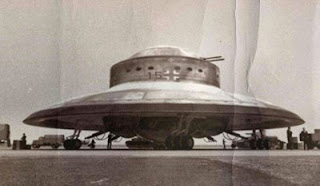Warlord #74 (October 1983)
Written by Cary Burkett; Penciled by Dan Jurgens; Inked by Dan Adkins
Synopsis: Travis Morgan and Krystovar have escaped the forces of New Atlantis through the sea cave back into Skartaris. Krystovar suggests they need a destination and asks Morgan if he has a home. Morgan says that he does and adds that it’s probably time he returns there to his mate.
Morgan and Krystovar land at the port of Bakwele. There they sell their boat and begin the trek across the swamps and the Forest of Ebondar to reach Shamballah. Krystovar fills Morgan in on the history of the New Atlanteans. They came from a different city-state, apparently, than the Atlanteans that settled Skartaris. Nothing the healer knows explains the advanced technology—some of it marked with the symbols of the U.S. Air Force—that Morgan found in the cave. That mystery nags at the Warlord, and he’d like to solve it.
Camping in the forest, Morgan goes to sleep, leaving Krystovar awake to tend the fire and take the first watch.
With both asleep, neither has a chance to see the large black bird that has been following them since they entered the forest, alight on a branch above them. Suddenly, their campfire begins to grow as if taking on a life of its own. It spreads quickly and strangely to form a circle entrapping our heroes.
The rising heat wakes Morgan from slumber. He rouses Krystovar, who immediately notices the behavior of the fire isn’t naturally. Morgan isn’t concerned with that at the moment, and has Krystovar climb up into a tree. When they’re both amid the branches, Morgan plays Tarzan again and swings them both to safety.
As soon as they’re free, the fire dies away. Krysotvar again points out the fire wasn’t natural and asks Morgan if he has any enemies in the forest. Morgan’s reply:
The two soon reach Shamballah. Morgan doesn’t get the reception he was expecting, as the guards bar him from entrance, and his wife’s faithful soldier Trogero shoots an arrow his direction and tells him to leave Shamballah immediately.
Krystovar notives the arrow has a message on it. Following its instructions the two hide in the woods outside the East Tower. Trogero appears and lowers a rope. He tells Morgan that Queen Tara did indeed give orders that her mate was not to be allowed to enter the city, but he had to help Morgan anyway.
Morgan disguises himself and sneaks into the palace. Tara has been expecting him:
See? Anyway, she gives him the usual lecture about running off after adventure and leaving his wife and responsibilities. She accuses him of once being a man with a dream of freedom and progress for Skartaris—a dream he has abandoned. Morgan admits this is true, but he says he’s turned over a new leaf and he’s going to be that man again. And he loves her.
Tara softens a bit (as she always does), and says she’ll think over letting him stay. She pulls him into her boudoir before sending him away.
A little later, a self-satisfied Travis Morgan remembers the silver cassette in his belt. He ought to get read of that thing, but his curiosity has been piqued and he really wants to get back to that cave…
Outside, a sinister looking black bird wings over Shamballah, plotting.
Things to Notice:
- Tara falls for Morgan's dubious promises once again.
- Where does Krystovar go all the time Morgan is making up with Tara?
Where it Comes From:
The title is a reference to a line from the Mother Goose rhyme "To Market, To Market."
Burkett gets around to explaining the difference between his New Atlanteans and the Atlanteans we've seen before in Warlord. Krystovar's explanation doesn't real provide a reason for the wide technological disparity between the two Atlantean isles.
The raven that isn't really a raven is a character returning from a previous issue, but I'll wait for the story to reveal who that might be.
Burkett gets around to explaining the difference between his New Atlanteans and the Atlanteans we've seen before in Warlord. Krystovar's explanation doesn't real provide a reason for the wide technological disparity between the two Atlantean isles.
The raven that isn't really a raven is a character returning from a previous issue, but I'll wait for the story to reveal who that might be.























